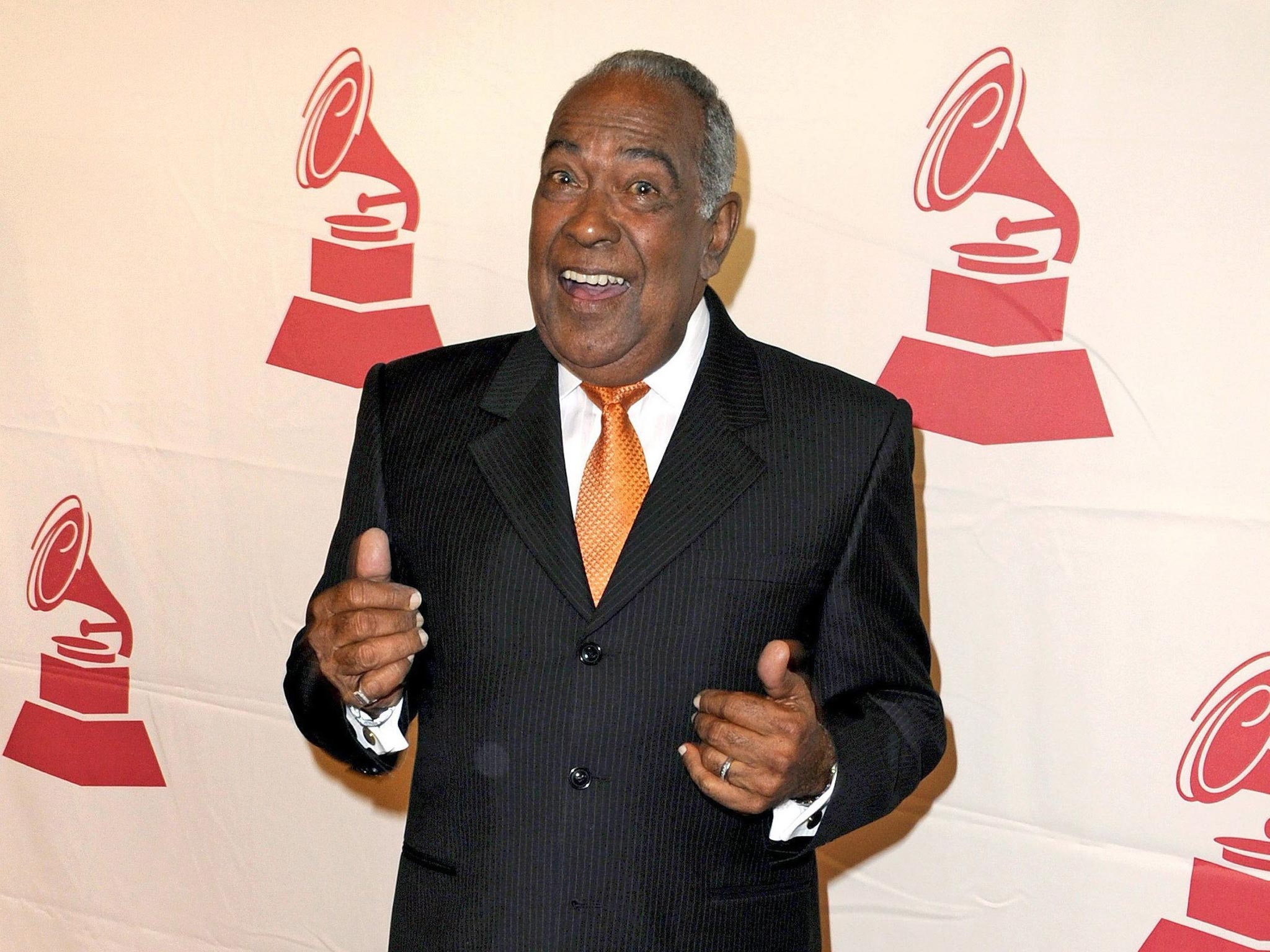Jose 'Cheo' Feliciano: Composer and singer of salsa and bolero music who was adored by Spanish speakers the world over

As a composer and singer of salsa and bolero music, Jose “Cheo” Feliciano was a natural when it came to making people dance. He became a legend among hundreds of millions of native Spanish-speakers from the Caribbean to Los Angeles, from New York City to the Philippines, even south to Argentina and Brazil and across the Atlantic in Spain. Even if you don’t speak Spanish, chances are you’ve danced to his music, or at least tried to.
As a Puerto Rican, because his Caribbean homeland is an American “commonwealth territory” although not a state, he was born a US citizen and moved to Spanish Harlem in New York when he was 16. Such was his import and respect in his homeland and far beyond his own shores that, after his death, the governor of Puerto Rico, Alejandro Garcia Padilla, declared three days of state mourning.
Best-known as part of the New York-based Fania All-Stars (named after the epoch’s most famous salsa record label which, in turn, was named after an old Cuban bolero song), his international hits included “Amada Mia”, “Anacaona”, “Los Entierros”, “Una en un Millon”, “Mi Promesa” and “Contigo aprendi”.
Arriving in New York as a teenager, Feliciano soon found himself at the heart of the city’s latino salsa and bolsero music and dance scene, which helped latinos – immigrants from Puerto Rico, Cuba, Central America, Colombia, Venezuela or Mexico – maintain their culture, and their sanity in a not-always-welcoming Big Apple. For Puerto Ricans, even though they were automatically given US passports during the First World War, their status in New York City was in many ways reflected in the Broadway and Hollywood success of West Side Story, which shows Puerto Rican (Sharks) and Polish (Jets) immigrants fighting for survival.
“Cheo” – pronounced Chay-oh, a Latino nickname for Jose, much as Pepe is in Spain – is not to be confused with his compatriot Jose Feliciano, the blind singer/guitarist best-known for his versions of the Doors’ song “Light my Fire”. Feliciano is not an uncommon name in Puerto Rico. After news emerged that Cheo had died in a car accident, many websites and even newspapers reported that it was the blind 68-year-old singer – 10 years Cheo’s junior and no direct relative – who had died. Websites were inundated with messages of condolence before the younger Feliciano’s agent tweeted that his client was very much alive, although deeply affected by the death of his compatriot.
Jose Luis Feliciano Vega, nicknamed Cheo from an early age, was born in Ponce, on the southern coast of Puerto Rico, in 1935 and formed his first salsa band at school when he was eight, using instruments made out of cans. After his father failed to find work as a carpenter, the family moved to New York in 1952, where young Cheo’s vocal skills and rhythm brought him to the notice of the great salsa musician and composer, Tito Puente.
After playing a variety of instruments in different bands, Cheo landed a job as a singer with the Joe Cuba Sextet before joining the Eddie Palmieri Orchestra in 1967, soon to be signed up by the Fania All-Stars, a salsa and bolsero ensemble whose singers included the great Cuban-American Celia Cruz and the Panamanian Ruben Blades. One of the first songs Feliciano sang professionally was “Perfidia” (Treachery), a bolsero classic written by the legendary Mexican, Agustin Lara.
As Feliciano and the Fania All-Stars become famous around the Spanish-speaking world, he drifted into heroin addiction and returned to Puerto Rico for rehab. He was later enlisted by the Puerto Rican government as an anti-drugs campaigner. In 2008 he celebrated his 50 years in the music business by hosting a concert at Madison Square Garden in New York, when the city’s then mayor Michael Bloomberg declared 20 July of that year “Cheo Feliciano Day”.
When I, a Scot, first tried to dance salsa in Puerto Rico to Feliciano’s songs many years ago while on assignment for The Independent, I had trouble getting the vital hip movement. A local Puerto Rican told me: “get in your shower and try to balance on a bar of soap with both feet. If you can do that, you’ll have nailed it.”
It was a perhaps-fitting coincidence that Feliciano died on the same day as an even-more famous latino, the writer Gabriel Garcia Marquez, himself a massive salsa and bolsero fan from his upbringing on Colombia’s Caribbean coast. To Garcia Marquez, salsa and bolsero music were a constant backdrop to his “magical realism” writing style. In 2008, Feliciano was given a lifetime Latin Grammy award by the US National Academy of Recording Arts and Sciences for his “outstanding achievements in the music industry.”
Feliciano was driving back from a San Juan casino, alone in his Jaguar in the wee hours when he crashed into a concrete lamppost minutes from his home, and was killed. His family said he never wore his seatbelt and that he had been at a meeting in the casino to discuss a forthcoming concert in Acapulco, Mexico. He is survived by his wife of 56 years, Socorro “Coco” Prieto Leon, formerly a professional salsa dancer, and their four sons.
PHIL DAVISON
Jose “Cheo” Feliciano, singer: born Ponce, Puerto Rico 3 July 1935; married 1957 Socorro Prieto Leon (four sons); died Cupey, Puerto Rico 17 April 2014.
Subscribe to Independent Premium to bookmark this article
Want to bookmark your favourite articles and stories to read or reference later? Start your Independent Premium subscription today.

Join our commenting forum
Join thought-provoking conversations, follow other Independent readers and see their replies